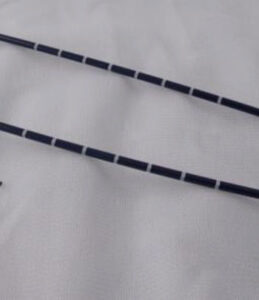The medical device industry is a world of meticulous engineering and unwavering commitment to patient well-being. Every component, from the delicate syringes used for precise injections to the complex implants designed to restore functionality, plays a vital role in diagnosis, treatment, and recovery.
But the functionality of these devices extends beyond their core design. Therefor, clear and accurate markings and instructions are essential for proper use, ensuring optimal patient care and minimizing the risk of errors. This critical role falls to medical grade inks, specially formulated to meet the stringent demands of the medical field.
Regular Inks Versus Medical Grade
Regular inks simply aren’t up to the task. They might lack the biocompatibility needed for safe contact with the body. It is also likely they may also degrade under harsh sterilization procedures. They could also wear away prematurely, hindering the readability of vital information.
Medical grade inks address these concerns head-on, offering a trifecta of essential qualities:
- Biocompatibility: Rigorous testing ensures they won’t cause any adverse tissue reactions or immunological responses when in contact with the body.
- Chemical Resistance: Certain inks printed on particular substrates can withstand the potent cleaning and sterilization solutions.
- Durability: They can resist wear and tear over time, guaranteeing the clarity and legibility of markings throughout the lifespan of the medical device.
Applying Medical Grade Inks: Pad Printing vs. Silk Screen Printing
Now that we understand the crucial role of medical grade inks, let’s delve into the two primary printing methods used to apply them on medical parts: pad printing and silk screen printing.
Pad Printing: The Versatile Choice for Uneven Surfaces
Imagine a printing technique that can seamlessly transfer intricate designs onto syringes, catheters, or even the curved surface of a surgical instrument. That’s the magic of pad printing. This method utilizes a soft, silicone pad to act as an intermediary between the printing plate and the medical part. The ink is first deposited onto the etched design on the plate. Then, the silicone pad presses down, conforming to the contours of the part and picking up the ink. Finally, the pad gently presses onto the medical component, transferring the design with remarkable precision.

Pad printing’s unique capabilities make it ideal for:
- Complex Shapes: Unlike some printing methods limited to flat surfaces, pad printing can handle curves, angles, and uneven geometries with ease.
- Small Parts: The adaptability of the silicone pad allows for printing on miniature medical components like stents or needles.
- Intricate Details: Pad printing delivers sharp and defined images, ideal for reproducing logos, tiny text, or detailed graphics.
Silk Screen Printing: Printing on Flat Surfaces and Cylindrical Shapes
Silk screen printing, a time-tested technique, utilizes a stencil to control the ink application. A mesh screen with a blocked-out design acts as the barrier, allowing ink to pass through only the open areas. The ink is then pressed through the screen onto the medical part using a squeegee. This method excels in creating crisp, well-defined markings on flat or slightly curved surfaces.

Here’s where silk screen printing shines:
- Larger Parts: This method is efficient for printing on larger, flat medical components like surgical trays or diagnostic test strips.
- High-Volume Production: Silk screen printing setups can be optimized for fast and efficient printing, making it ideal for high-volume production runs.
- Sharp Markings: The stencil technique ensures clean lines and well-defined text, crucial for clear instructions and labeling.
Selecting the Right Combination: Ink and Printing Method
Choosing the optimal combination of medical grade ink and printing method depends on several key factors:
- Material of the Medical Part: Different plastics and materials used in medical devices have varying surface properties. Specific ink formulations ensure optimal adhesion and long-lasting printability.
- Type of Information Being Printed: The complexity of the design, text size, and inclusion of intricate details might favor one method over the other. For instance, pad printing might be better suited for reproducing tiny logos on a curved surface, while silk screen printing might excel at printing large, clear instructions on a flat diagnostic panel.
- Production Volume and Budget: Pad printing is often preferred for smaller batches due to its setup flexibility. Conversely, silk screen printing can be more cost-effective for high-volume production runs due to its faster printing speeds.
Accumark Inc.: Your Trusted Partner in Medical Device Printing
At Accumark Inc., located in Hudson, Wisconsin, we understand the critical role clear and compliant printing plays in the success of medical devices. We are a leading provider of medical device printing services, offering a comprehensive selection of high-quality medical grade inks compatible with both pad printing and silk screen printing.
Our team of experienced engineer staff possesses a deep understanding of the specific requirements of the medical device industry. We can guide you through the process of selecting the most suitable ink and print process for your medical parts.
For more information and to see how Accumark Inc can help, contact us today!
